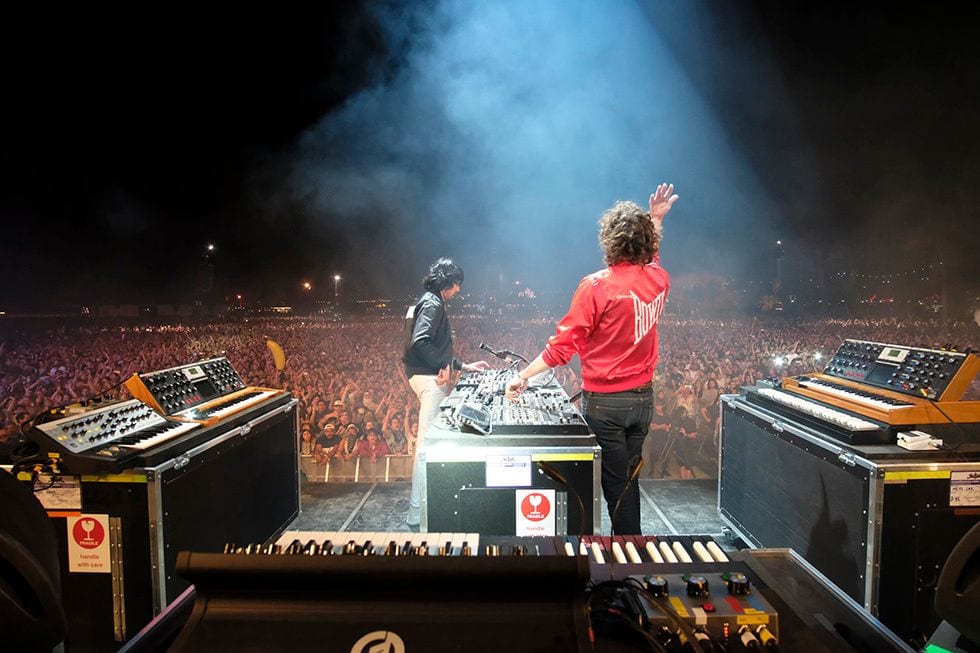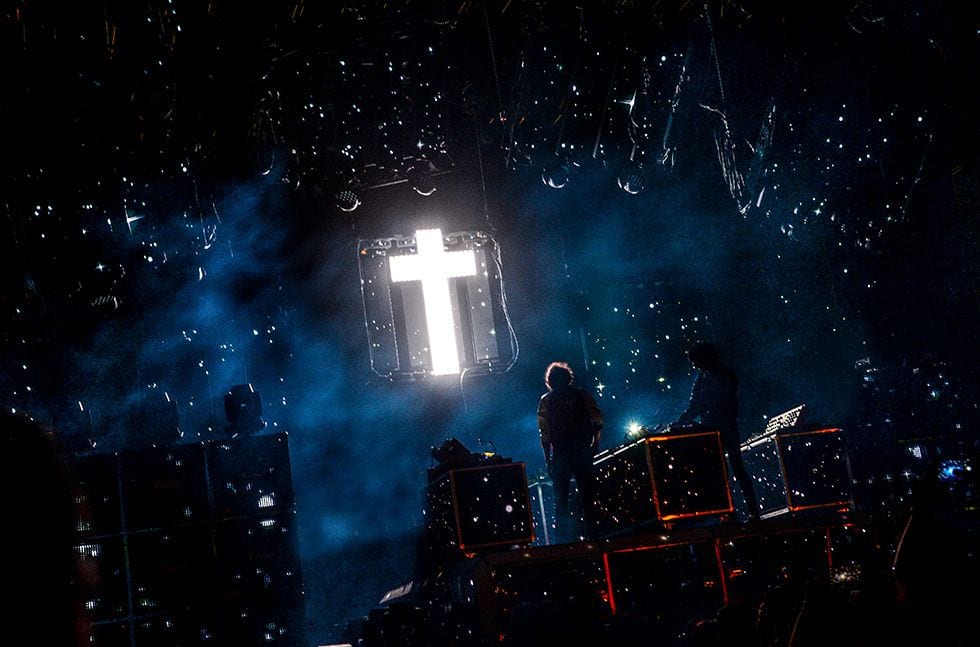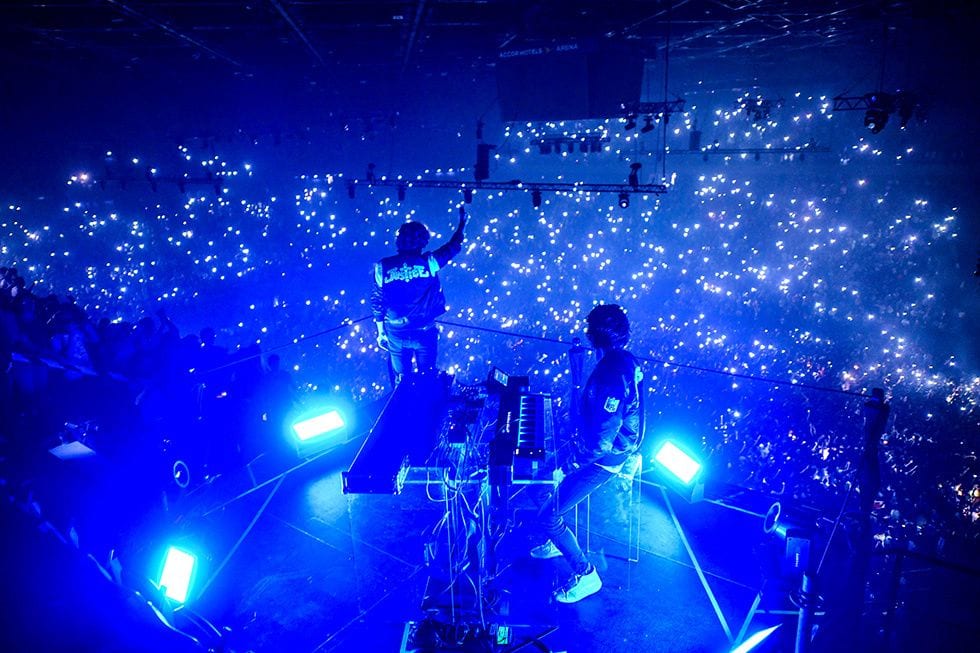
Debates about the death of rock music are like calls for “Free Bird” at any given concert: they’re part of the 21st century musical firmament, however much they should have died out decades ago. Like any genre, rock music changes, and no amount of hand-wringing by music critics or artists will obscure the fact that rock music ingrained itself into American culture. Should it ever be lowered into a grave, it will come crawling back out. The question, the same one for any such genre or style, is what rock would look like upon its re-emergence.
The artist and band names that get tossed out in discussions of “who is keeping rock alive” – Jack White, Car Seat Headrest, the Black Keys – don’t offer much promise that rock can simultaneously be alive and progressing. Sure, those artists know how to hit the right notes, and some (the Black Keys) apply contemporary production filters to the guitar-led sound of the great rock bands of yore, such as Led Zeppelin, Aerosmith, and the Who. But rather than keeping to the playbook while finding ways to overhaul it, these 21st-century rock outfits all too often mildly restore the past, erring too close on the side of conservation rather than exploration. It doesn’t help that the “saviors of rock” are all too often white dudes, not unlike the white dudes that came before them. St. Vincent has done far more to advance the legacy of rock music than any of rock’s supposed apostles.
Gaspard Augé and Xavier de Rosnay, the creative minds behind Justice, do not usually get invoked in the discourse on contemporary rock music. But they should. After their breakthrough debut Cross (2007), Augé and de Rosnay seemed poised to become one of the dominant acts in electronic music. Cross‘ high-voltage energy, creative sampling, and irresistible beats represent one of the finest first releases by a band in this young century, and when news of Audio, Video, Disco, Justice’s sophomore outing, broke out in 2011, fans and critics readied themselves for yet another series of electronic bangers.
Yet what dropped was not the kind of electronic album that Cross is, nor is it like any electronic album that has been released since. Audio, Video, Disco led critics to invoke not Justice’s contemporaries in electronic music like Daft Punk, but rather classic rock and prog bands like the Alan Parsons Project and AC/DC. (“On’N’On” even features a clever reimagining of the immortal guitar riff from Led Zeppelin’s “Kashmir”.) Justice, it seemed to many, jumped the genre shark. Is Justice a rock band? Sure, Augé and de Rosnay play on synthesizers and MIDI controllers, the devices ostensibly bringing about rock’s demise, but they sure sound like they’re writing power chords and guitar solos.
In hearing either Augé and de Rosnay talk about Justice’s music, however, one cannot help but come to the conclusion that the two men reached long ago in their compositional process: genre be damned. Justice’s music oscillates from IDM glitchiness to fist-pumping rock anthems and everywhere in between – Audio, Video, Disco‘s “Canon” could have been a Philip Glass piece in another life. Justice isn’t here to save rock, and it doesn’t care to. But in that nonchalance Justice may just be the kind of rock band we need in these trying times: a band who typifies the rock spirit, and indeed the aesthetic, without any of the self-reflexive worries that its style is going the way of the buffalo. (Plus, if the leather jackets Augé and de Rosnay are known to sport aren’t rock ‘n’ roll, I don’t know what is.) When I think of great artists of the present who rock without worrying about rocking, who know how to use the rock toolkit while changing things up – the aforementioned St. Vincent, Algiers, Sleater-Kinney, and Spoon, to name a few – I have no worries about rock music, whatever strange way it might go. I feel the same when I listen to Justice.
Nowhere is that feeling more strongly evoked in Justice’s outstanding live albums, particularly 2013’s Access All Arenas, recorded at the ancient Roman amphitheater in Nîmes, France. A great live record can capture the full-bodied experience of being at a show, and Access All Arenas does just that. This poses a challenge for Justice’s latest live album, Woman Worldwide, based on the live shows promoting Justice’s most recent LP, 2017’s Woman. The brilliance of Access All Arenas feels impossible to replicate or live up to. What could Justice do?
The answer is ingenious: don’t do it live. With Woman Worldwide, Justice may have recorded the first-ever live studio album. Drawing on recordings from several concerts on the Woman Worldwide tour—which, at the time of writing this piece, is ongoing—Justice took to the studio to recreate the experience of the Justice live show without the hitches that so often accompany live albums. No audio dropping out unexpectedly, no cords accidentally kicked loose, no wrong notes: Woman Worldwide, the album, is Justice live without the blemishes. Predictably, some of the live-wire thrills of a live concert are lost in translation; after all, the thrill that something unexpected, even something wrong might happen contributes to the irreplaceable joy of seeing live music. But drawing on their stellar record as stage performers, Augé and de Rosnay successfully transcribe the stage to the studio and produce a record that’s equal parts a testament to Justice’s live show and a fine retrospective on the band’s career so far. Justice has only three live LPs to its name, but each of them speaks to this band’s unique vision. And yes, there are bangers aplenty.
Right before Woman Worldwide‘s release, I spoke with Augé over the phone about the album, how Justice has responded to changing expectations and avoiding cliché.
Woman Worldwide follows the pattern of past Justice releases, where each studio album is followed by a live record. Was there a key reason why this record, unlike A Cross the Universe and Access All Arenas, was recorded in a studio rather than a live setting?
Our first two live records were designed to be immersive experiences. Having done that already, this time around we thought it would be better to make something more accessible for the listener. Also, when we perform live there are always technical issues or mistakes, human mistakes, which are fine in performance because it’s part of the charm of the live show. But for [Woman Worldwide] we recorded 20 live shows and took the best takes back to the studio to perfect every track. So in a way, it’s kind of the perfect Justice live show.
Did you find that your compositional process for the Woman Worldwide tour differed from the Cross and Audio, Video, Disco tours?
Basically, we have to start from scratch every time we work on the new live show because we have new material to add. We have to find ways to make everything cohere together. For someone who doesn’t know any Justice songs, when you come to see the Woman Worldwide tour, you end up wondering which songs are old and which songs are new. It’s a real challenge for us to find the perfect sequence; we spent almost eight months working on the new live show because we had to go back into the old song files and make everything sound coherent. It’s a bit like a rock band in that people like the drummer don’t change instruments between every track: we go through the simple versions of the tracks, keeping the vocal loop or melody, and changing out certain drum hits or bass sounds.
Are the instruments and equipment that you’re working with now also new?
It’s a completely different setup from Audio, Video, Disco and Cross. Our touring pattern happens every five years, and typically by the time we’re done with one record the equipment is obsolete, so we always look for new plug-ins and synthesizers. Things also change because we end up carrying around too much on tour.
When it comes to the task of blending old and new songs, do you have to map out the entire show in detail beforehand? Is there any room for improvisation?
How the live show works is that we sort all the tracks we’re going to play by key and tempo, and then we trained ourselves to find ways to make everything blend together. It’s a fun process, but it takes a lot of time. It’s a sonic jigsaw, and there’s one way to make the perfect sequence in terms of intensity. For us, it’s like structuring an opera. We start gentler and then go harder and harder; it’s common for us to have our live shows follow a certain scenario. So once all of that is set, you can’t change much on stage.
You’ve toured this kind of show across all kinds of venue, from smaller clubs to Roman amphitheaters. I hear Justice being called an “arena” band a lot, but do you feel that your show is best suited to one type of environment?
Not really. We wouldn’t mind playing smaller shows, but the way we set up our rig and the visuals require a certain type of venue. It’s a bit tricky to make things fit in a smaller venue, and when we play those smaller venues, we want the show to escape the rectangle of any show like that. In our setup we want a layout that could confuse people a little bit about the depth and space we have on stage; there’s something magical about the way that feeling evolves throughout a show. It’s like bouncing between Blade Runner and Transformers, the way the stage transforms throughout the show. Most of all, we avoid the electronic live show cliché of the sandwich of the instruments, the musicians, and the screen in the back. On stage, we like our equipment to be as visible as possible, and for ourselves to be face-to-face rather than elbow-to-elbow.
Speaking of electronic music clichés, in interviews for Audio, Video, Disco you and Xavier talked about wanting not to be pigeonholed into the electronic scene that you got lumped in with when you released Cross. Since Audio, Video, Disco and now with Woman, do you feel that people have stopped trying to put you in boxes as much? Do you have a general sense of your audience now?
The main luxury we have is that since the second album, it’s hard for people to expect something in particular from us. Since our music isn’t geared toward the radio or being radio-friendly, we’ve been given a kind of freedom that is precious to us. We’re able to play big venues and festivals without having that commercial pressure. For us, it’s the best of both worlds. We still have a big following without any compromises.
In the shift that happened from Cross to Audio, Video, Disco, I felt that your music had taken on the style of classic rock—not that it wasn’t electronic music anymore, but rather that it had that unique physicality of rock music. Was there a conscious “genre shift” for you and Xavier at some point?
We’re just making music. We don’t really come from an electronic music background, and anyways “electronic music” is just a process of using machines and computers to make music. We don’t feel connected to the “electronic scene” mostly because we have so many different influences; it would be impossible for us to stick to the electronic genre in the purest sense. Electronic is one type of music we like amongst many.
If you aren’t connected to the electronic scene, is there a “scene” or some other thing like that to which you feel a kinship?
Well, we aren’t trying to be outsiders. “Where” we are is just a matter of taste. The reason we aren’t connected to the electronic music of today is that it became aggregated to the mainstream. For example, any pop hit of today could be connected to electronic music. There is a lot of amazing electronic music today, but just using the words “electronic music” doesn’t mean much. You can put completely different artists in the same category, so in the end, it’s complete nonsense.
People were somewhat surprised when Audio, Video, Disco came out for how it broke from the mold of Cross. With seven years now passed since that album and the subsequent release of Woman, do you feel that people are generally on board with the direction you’re going?
Our work never really changed that much. We’re just trying to make pop music of a certain kind, although pop very different than the pop format of today. Cross was a disco record, and we’re still doing disco, but not “disco-by-the-books”. We have a high view of disco because it combines electronic, classical music, and pop music. It’s very romantic, baroque, and danceable.
On classical music, I’m reminded of the song “Heavy Metal” off of Woman, which sounds like a Baroque harpsichord etude. What classical influences do you and Xavier draw from?
The over-the-top baroque feel is something we’ve always liked with our music. Kind of like Yngwie Malmsteen, that “shred meets classical” style. Then there’s Bach, of course. I have a friend who has a collection of limited edition records, and he has this great Eric Satie piece. Satie had a very specific vision of melancholy; his music was all about this mood.
Woman Worldwide both works as a live album and a retrospective on Justice’s career thus far. As you plan out your live shows, do you already feel that there are songs that you “always have to play?” Are there songs that have a resonance for you two that will usually have a place in the live show?
No, and the thing is we envision live shows and records quite differently. When we compose for records, it’s a much more egoistic pleasure: we’re trying to surprise each other and make music we want to listen to. But then for the live shows, there is typically a type of crowd-pleasing element. People are paying to see us play, and obviously, they want “the hits”. We don’t have a problem with playing “We are Your Friends” or “D.A.N.C.E”. When you go to an AC/DC concert, you want to hear “Back in Black”.




